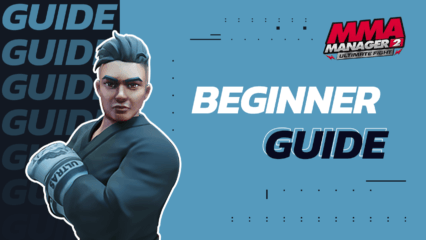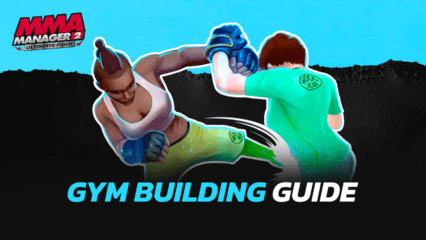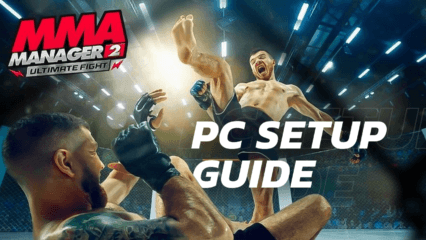How to Train Fighters in MMA Manager 2: Ultimate Fight
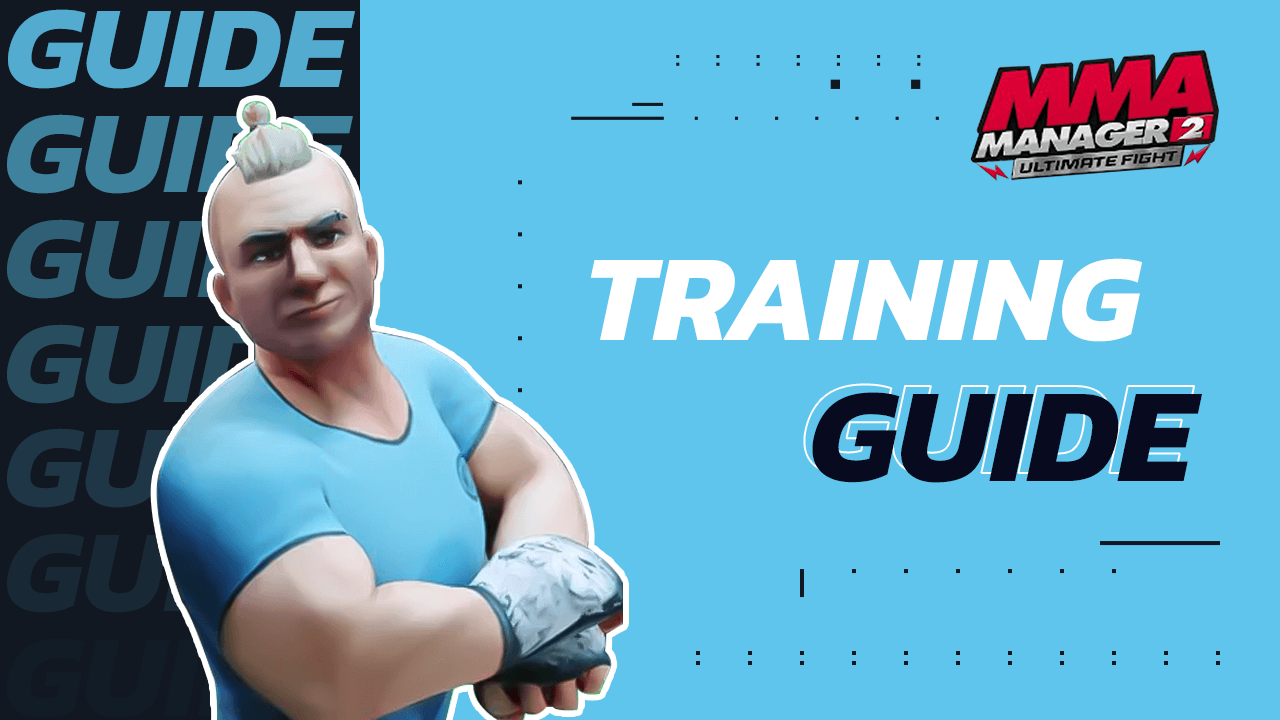
Your fighters when you play MMA Manager 2: Ultimate Fight can be the best MMA fighter in the world – if and only if you properly invest time and resources into training them. But even despite training, the chance of victory is still highly dependent on a well-formulated strategy. In this guide, we’ll show you how to train your fighters through various training methods in your gym. Additionally, we’re also going to have a deep dive into the gameplan tweaking feature of the game to help you become better at formulating fight strategies. Follow all the things discussed in this guide and your fighter will dominate the leaderboards in no time!
Equipment and Coaches/Trainers
Your fighter’s MMA capabilities are defined by their skills and base stats.
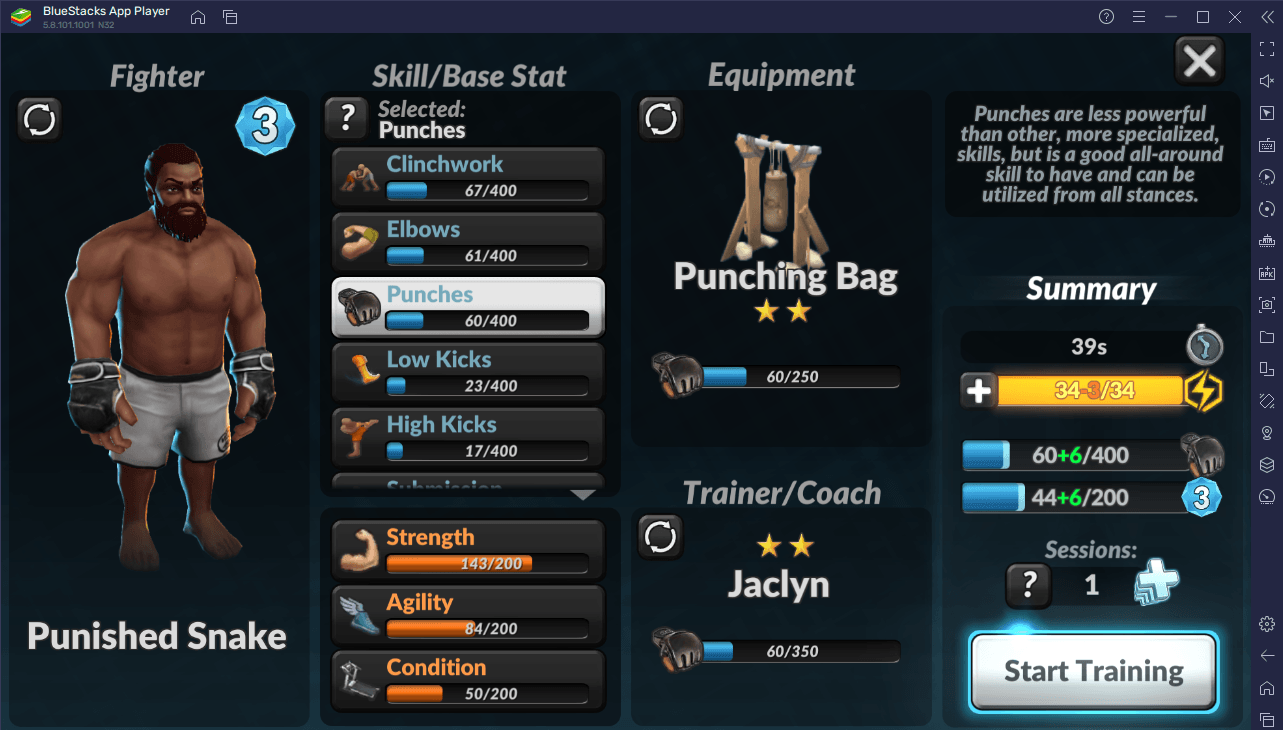
Skills comprise of specific MMA skills such as punching and submissions whereas base stats comprise of generic fitness characteristics namely strength (damage per strike), agility (initiative to attack), and condition (max health, health regeneration, and overall damage resistance). Skills and base stats are defined by a number of points. Training a fighter in this game is essentially just adding points to respective skills and base stats.
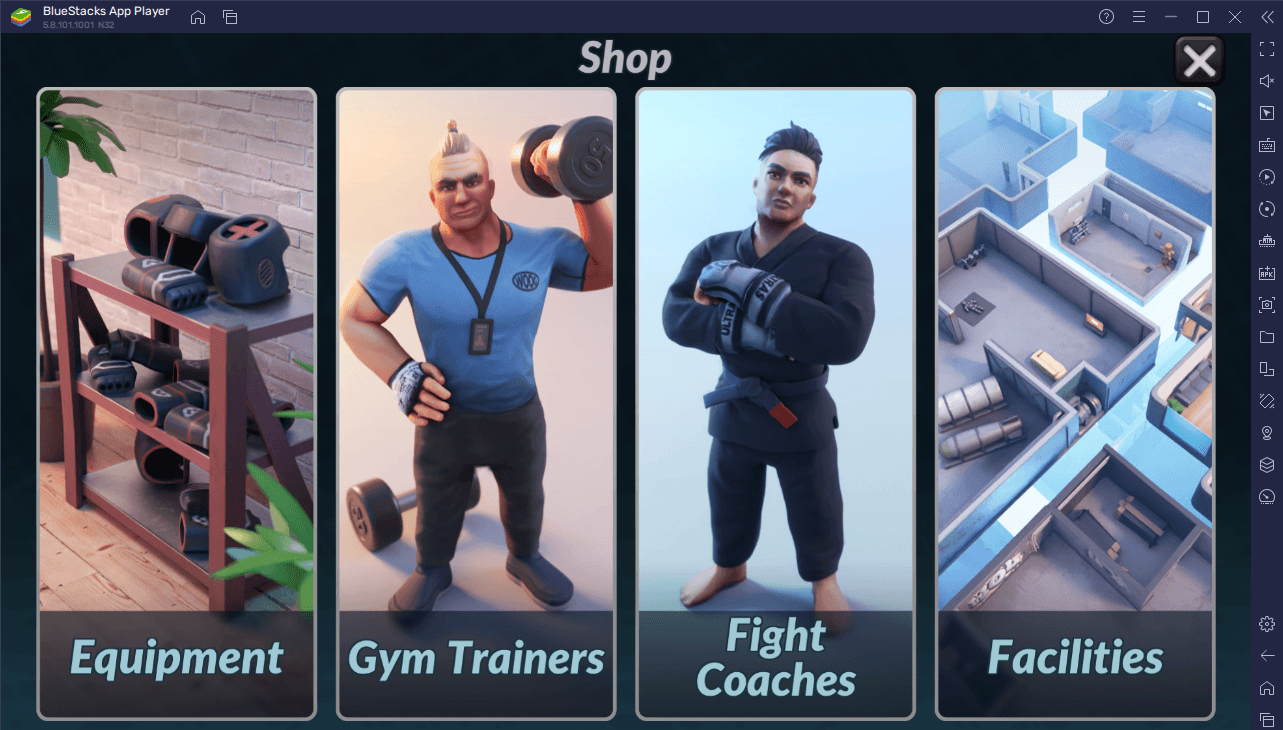
There are simply two requirements for training your fighters’ skills and base stats: equipment and coaches/trainers. All of these can be purchased from the in-game shop with either cash or money. Moreover, they can also be upgraded to improve training efficiency. Read more about equipment and building the ideal gym in this guide.
Equipment consists of gym equipment (i.e., treadmills, bench presses), fight equipment (i.e., punching bags, kick bags), and rings (i.e., wooden boxing ring). Equipment is needed to train your fighter’s skills and base stats. More specifically, gym equipment improves base stats while fighter equipment and rings improve skills.
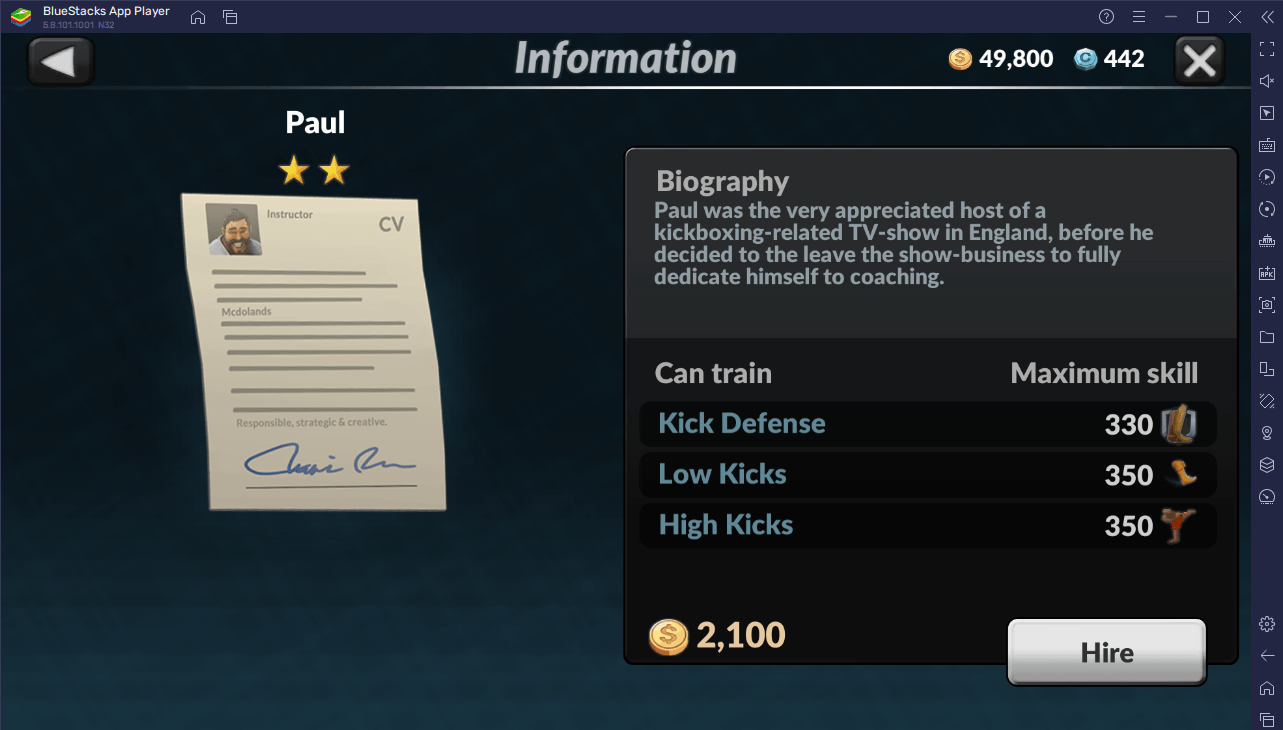
Like equipment, there are different types of coaches. Gym trainers train a fighter’s base stats and fight coaches train a fighter’s skills. You can view which skills/base stats a coach offers training for in the shop. It is recommended to recruit as many coaches and trainers as possible so that you can accommodate every fighter in your gym.
Training a Fighter / Stamina
There are two ways to access the training page of a fighter.
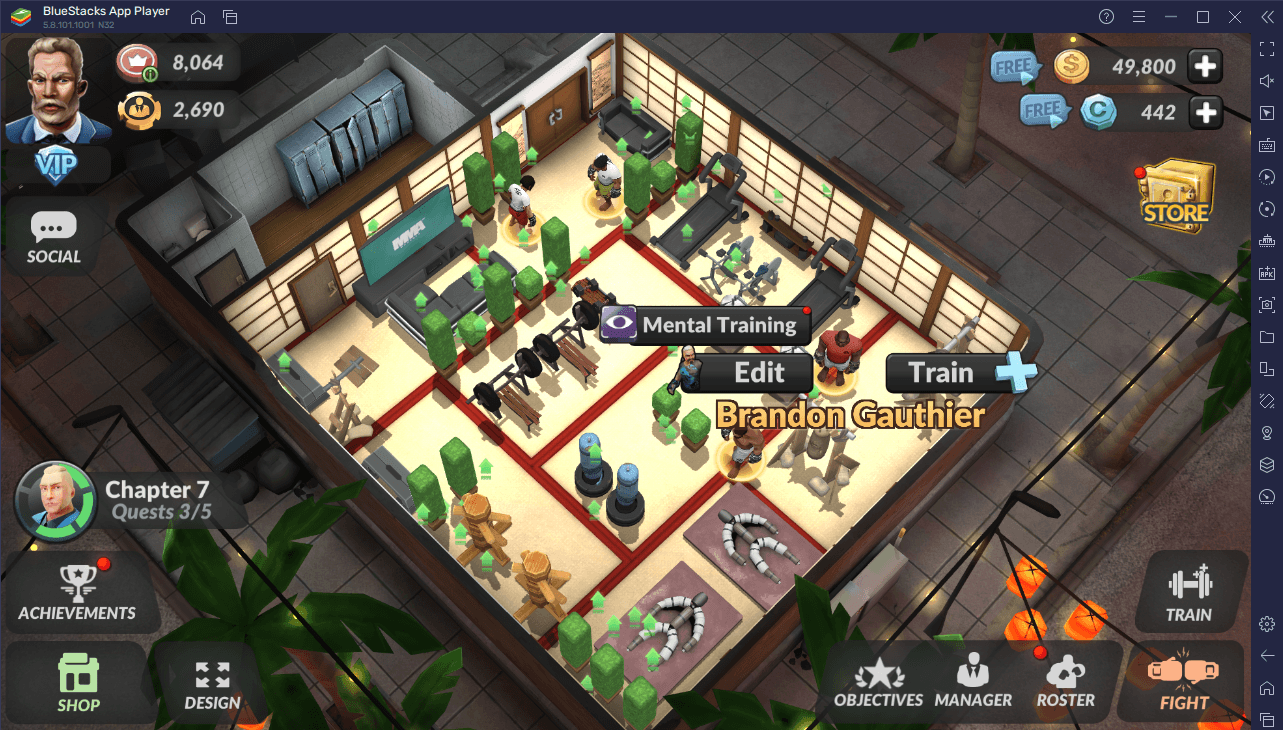
Firstly, you can click on any fighter roaming around your gym and click on the “Train” button. Secondly, you can click on the “Train” button at the lower-right of the main screen and then click on the fighter that you want to train.
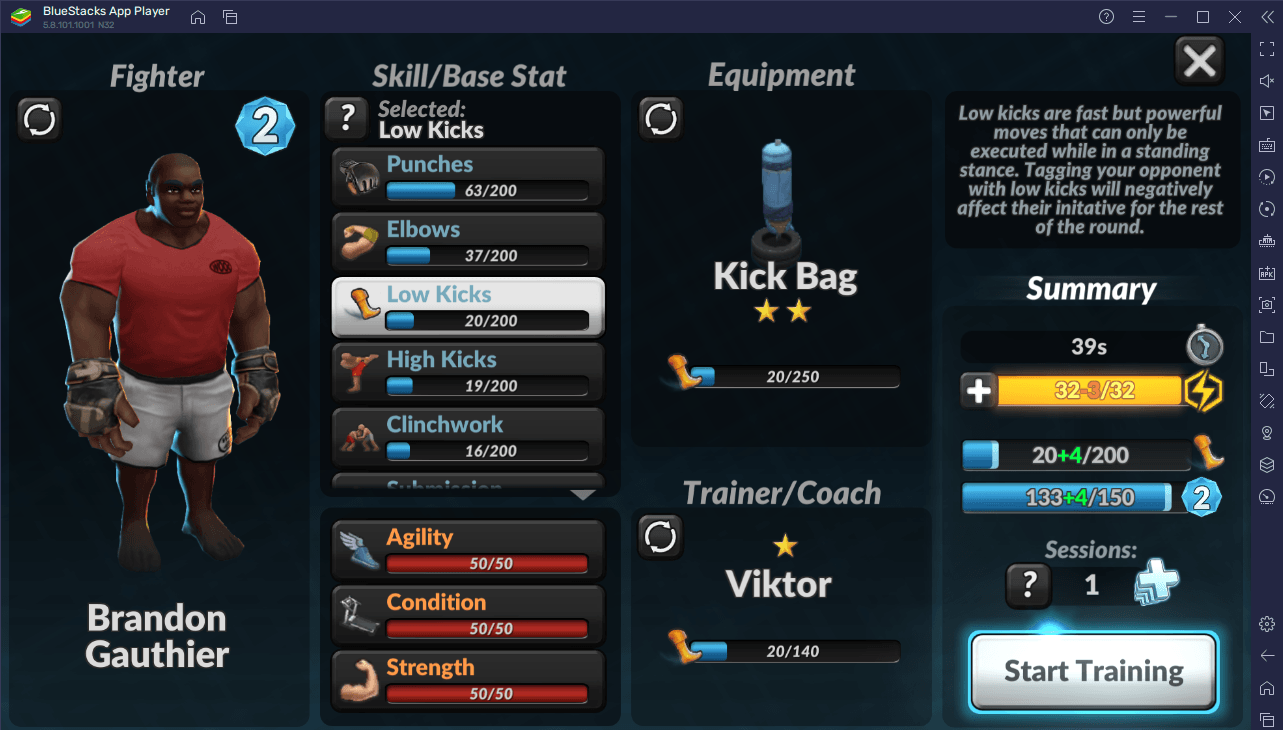
When you select a fighter, click on the skill/base stat that you want to upgrade. The game will then automatically pick the best equipment and coach/trainer for the training sessions. You can change the selections by clicking on the icon displaying two rotating arrows. A summary page is displayed to tell you how much stamina will be consumed, how many points will be added, and how many sessions will be done (you can only change this if you are VIP Level 2. Click on “Start Training” once you’re done setting up.
Training drains a fighter’s stamina. If they run out of stamina, you can refill it by paying 25 credits, consuming an energy drink, or by watching an ad.
Improving Skills
To improve your fighter’s performance in the ring, we must add points to their skills.
MMA Manager 2: Ultimate Fight provides a myriad of MMA skills that your fighter can train in. In fact, it is completely up to you if you want to develop only a few skills to specialize your fighter. For instance, you can make a “boxer build” by focusing more on punches training or you can make a “wrestler build” by focusing more on grappling and takedown skills.
You can start making these kinds of “builds” when you recruit a new fighter. Upon recruiting a new fighter, you can allocate 25 points to any skill and this is where you can disproportionately allocate more points to one or two skills over others.
Below is the complete list of skills as well as the required equipment for training. Remember that you need to have a fighting coach qualified for teaching a skill.
| Skill Name | Description | Required Equipment |
| Punches | An all-around skill that can be used regardless of stance. | Punching Bag |
| Elbows | Powerful special attacks that can be done in a clinch or on-the-ground stance. | |
| Knees | Powerful special attacks that can be done only in standing or clinch stance. | Knee Bag |
| High Kicks | Very powerful attacks that can only be done in a standing stance. Missing a high kick decreases a fighter’s initiative (to attack) and makes them vulnerable. | Kick Bag |
| Low Kicks | Fast yet still powerful attacks that can only be done while in a standing stance. Tagging an opponent with low kicks decreases initiative for the rest of the round. | |
| Clinchwork | The ability to limit an opponent’s movements via the clinch stance. | Clinchwork Dummy, Ring |
| Takedowns | The ability to do a takedown on an enemy and deal great damage to them upon impact. | Grappling Dummy |
| Submission | The ability of a fighter to get in position and control an opponent into tapping out through chokes or locks. | |
| Ground Grappling | The rate of success when transitioning and keeping positions on the ground. It is essential for ground-and-pound and submission fighters. | Grappling Dummy, Ring |
| Strike Def | Blocking of incoming punch strikes and damage reduction of impacted ones. | Ring |
| Knees Def | Blocking of incoming knee strikes and damage reduction of impacted ones. | |
| Kick Def | Blocking of incoming kick strikes and damage reduction of impacted ones. | |
| Takedown Def | Chance of avoiding and stopping a takedown attempt. | |
| Submission Def | Capability to escape an enemy’s submission attempt. |
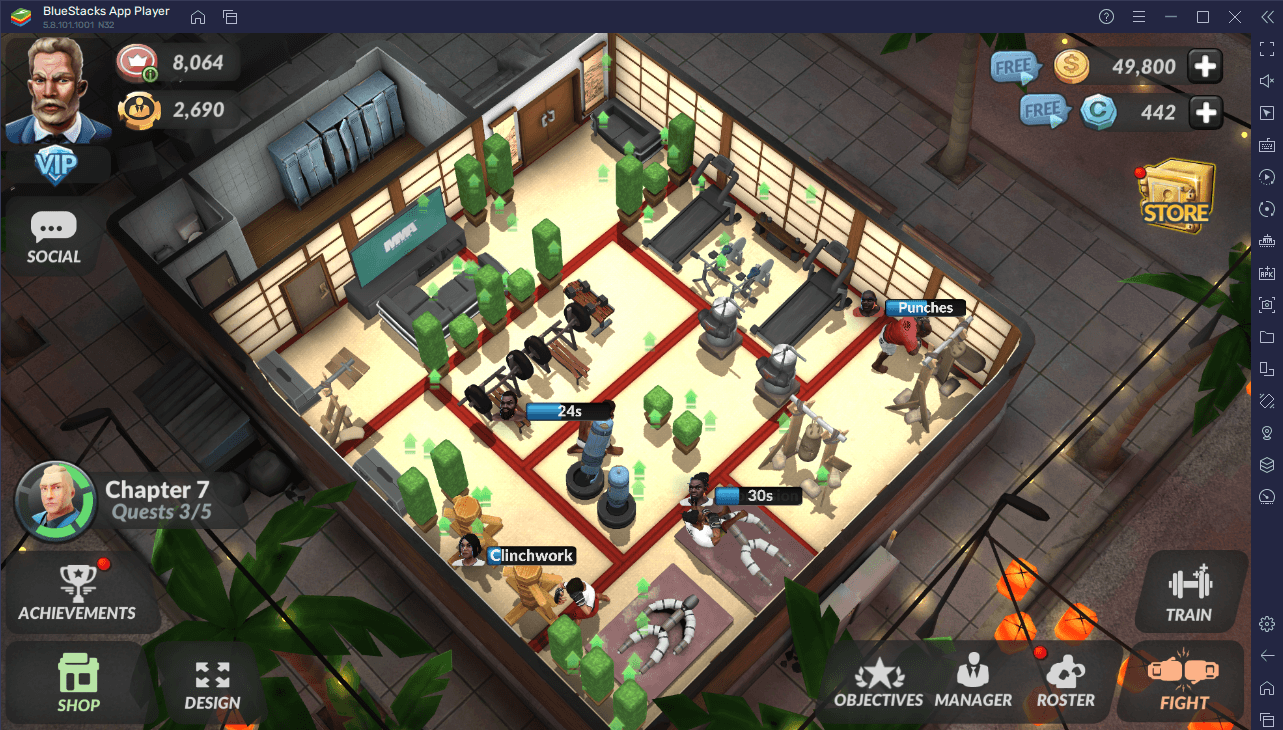
Make sure to regularly train your fighters to the point that they reach the maximum points for their skills. The skillpoint cap can be increased by levelling up which can only be done through more training. Ideally, a fighter should max all skills, but it is up to you if you want a more specialized fighter.
Improving Fighter Base Stats
Even if you have a fighter with maxed-out skills, they are practically useless when their base stats are barely trained. Base stats affect all a fighter’s skills and their overall performance in the ring.
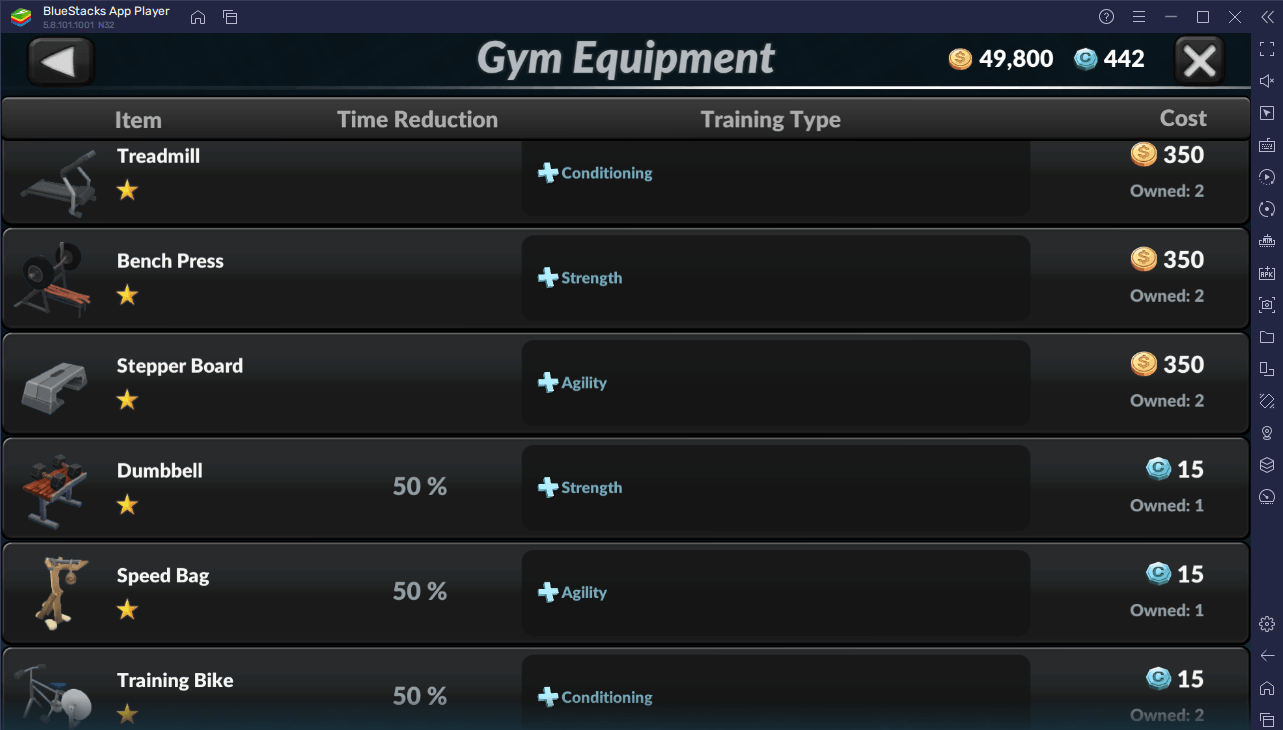
Below is a list of all base stats and the equipment required to train them. Like skills, you need to have a gym trainer that can train a base stat.
| Base Stat | Description | Required Equipment |
| Agility | The initiative of a fighter. A higher initiative incentivizes a fighter to unleash more attacks. | Stepper, Speed Bag |
| Condition | Deals with the fighter’s max health, health regeneration, and defense against enemy takedowns, clinchwork, and submissions. It also deals with resistance against enemy critical strikes. | Treadmill, Training Bike |
| Strength | The damage of each successful strike. | Bench Press, Dumbbell |
Mental Training
You can get some bonus upgrades for several of your fighter’s characteristics via mental training.
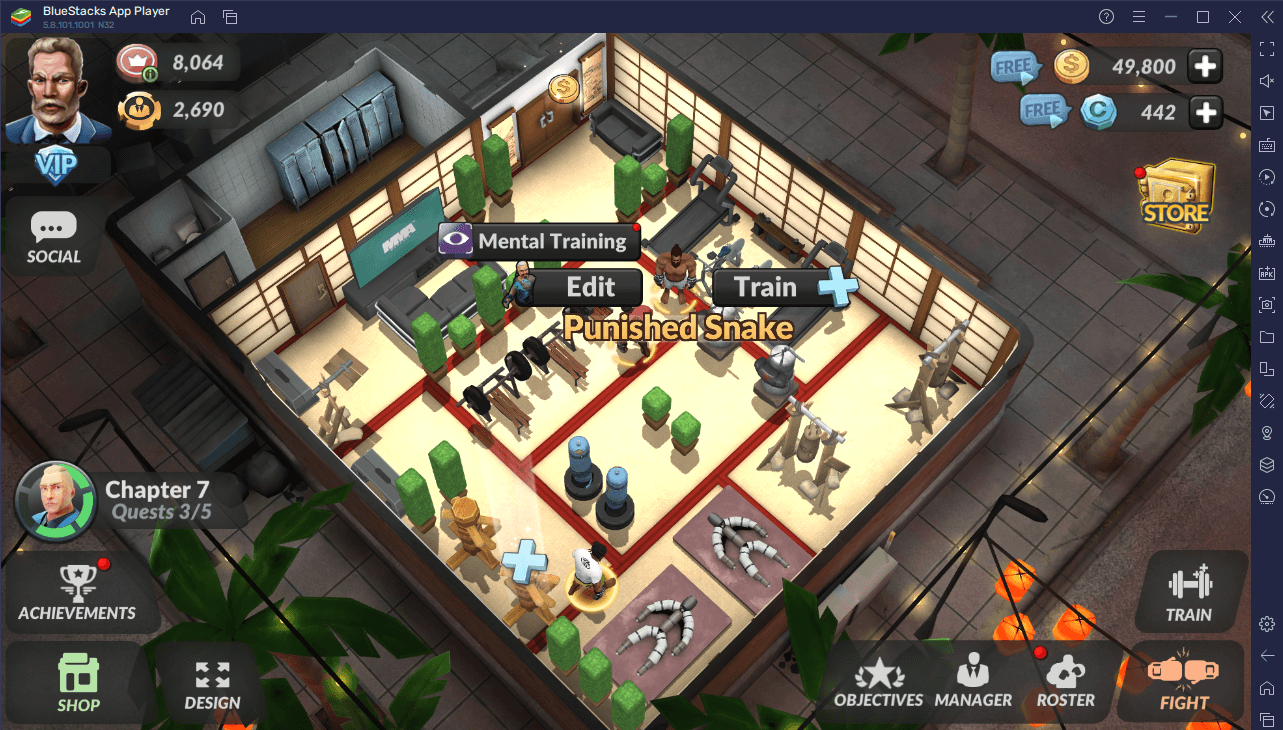
To access mental training, go to the main screen and click “Roster”. Then click on any fighter you want to upgrade and click on the “Mental Training”. The easiest way is to just click on any fighter roaming the gym and click on “Mental Training”.
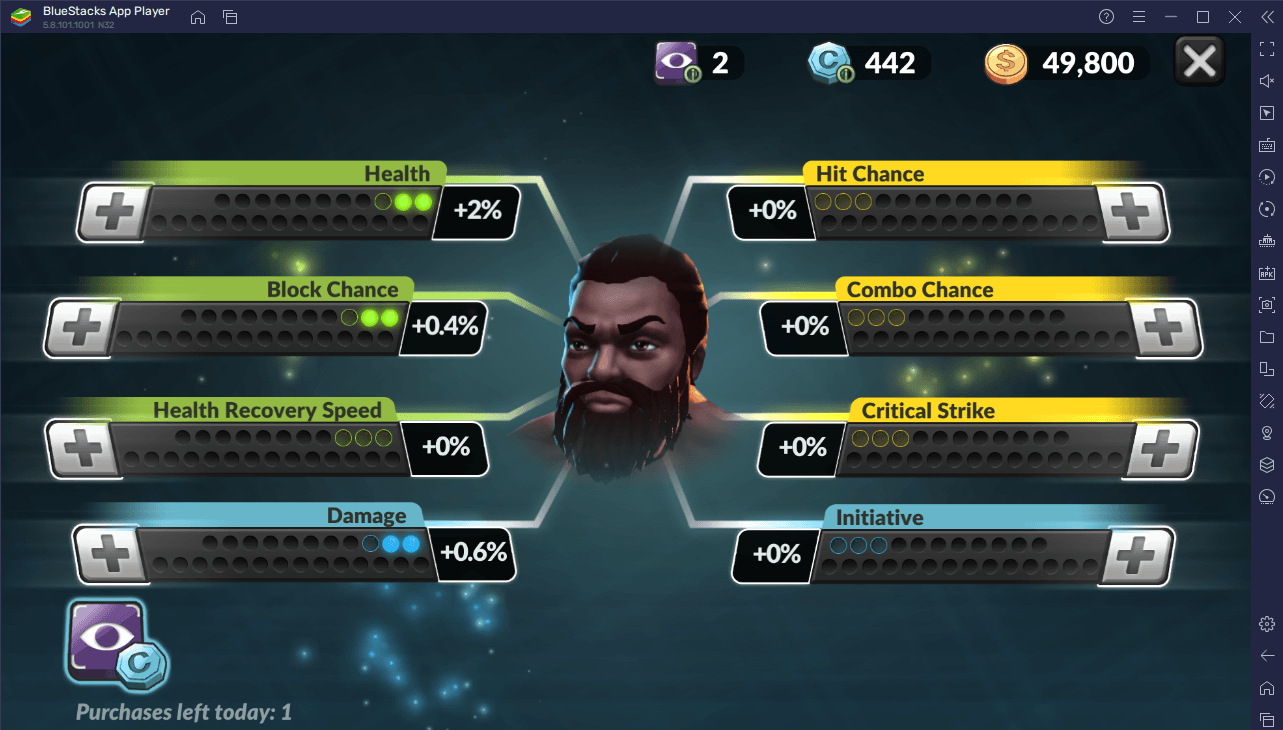
Mental training consists of eight upgradeable aspects: Health, Block Chance, Health Recovery Speed, Damage, Hit Chance, Combo Chance, Critical Strike, and Initiative. It is up to you which of these aspects to prioritize over the others. What makes mental training unique is that these are upgrades that cannot be attained through regular physical training. Mental upgrades can only be purchased with “Focus Points” which can be garnered by doing any of the following:
- Completing campaign stages
- Completing daily objectives and achievements
- Purchasing deals (microtransactions)
You can keep upgrading until you reach a cap. This cap can be increased when the fighter reaches a higher level. Additionally, you are also limited in purchasing mental upgrades per day.


